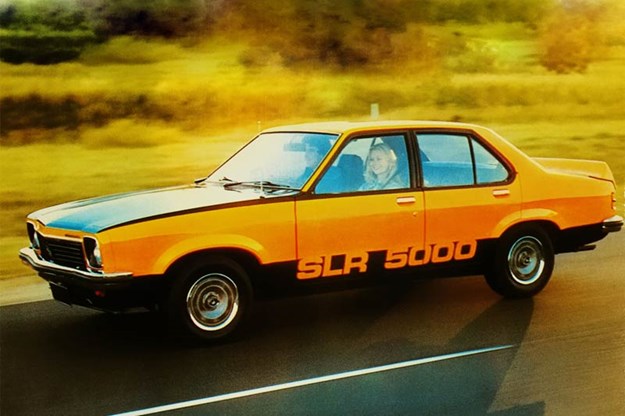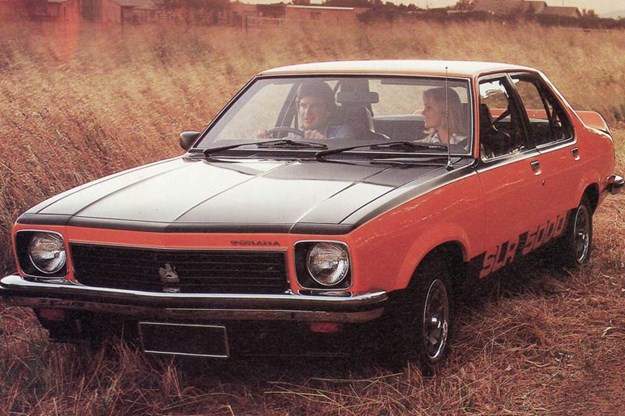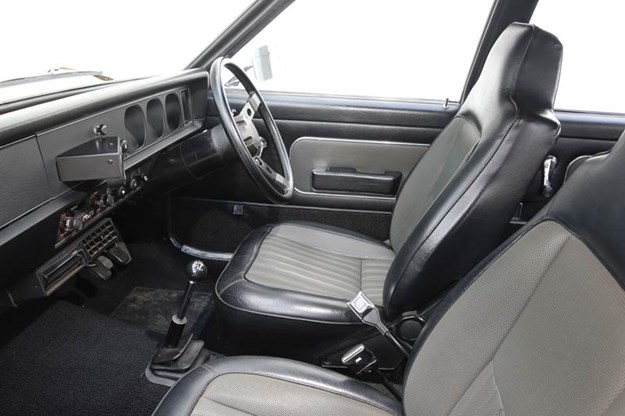1974-1978 Holden Torana SL/R 5000 - Buyer's Guide



|
Classic homegrown muscle car or overstuffed bogan hot rod? current SL/R 5000 values answer the question convincingly
Holden Torana SL/R5000
Holden’s V8-engined Torana came to be at a time when parts of the world were turning their back on fuel-guzzling cars. Parts of the world excluding Australia anyway.
Holden had been working on a V8 version of its mid-sized model since the days of the LC, however the bigger LH provided a more socially-acceptable platform for installation of local 4.2 and 5.0-litre engines.
Handling remained an issue and brakes were the bare minimum a major manufacturer could fit to a car with the performance potential of a five-litre Torana.
A large lump of engine mounted a long way forward in a light body obliged race teams to perform all manner of magic in order to conquer chronic understeer. Suspension alterations that in 1974 were seen as race-circuit radical would three years later closely resemble to those put into production for A9X versions of the Torana.
| Read next: Holden Torana L34 SL/R 5000 review

What the SL/R5000 had on its side was swagger. The Monaro was by 1974 aligned with an older, dare we say, more conservative section of the market. The SLR was an emblem of the cashed-up bogan; brash and loud with the looks and aerodynamics of a Besser block. However, with its guards pumped out to clear fat wheels, an air-dam, rear duck-tail, stripes and decals it could at least look like a racing car.
Inside the SLR cabin was a shrine to black plastic, with the ambience of something built to meet a very tight budget. The seats were flat and slippery and the carpets cheap. Restorers over the years have been tempted to substitute better-quality materials but those changes now work in reverse because they compromise authenticity.
Less than two years into the SLR’s life-span came the LX update. Visual changes were minimal and power declined from 186kW to somewhere below 170kW (the A9X was rated at only 161kW) due to new emission measures. Prices increased dramatically, sending a 5.0-litre LX SLR soaring in value by more than 50 per cent against the original LH.
| Read next: 50 years of the Torana

Back in 1974 before galloping inflation hit the car industry the SLR/5000 entered an excited market at $4415, or around $500 less than the cramped and slightly slower Datsun 240Z.
Chasing the progress of this pair through 45 years of value change we find the Datsun delivering impressive returns but still getting comprehensively flogged by the Torana which recently bustled its way past $100,000. However it wasn’t always like that and slow growth resulted in many SLRs being scrapped or disappearing under junk in back-yard sheds.
Not all cars built as SL/R5000s remained that way, though. One factor likely to slash mega-dollars off selling prices is confirmation that someone in the deep past has repaired a car using an incorrect body shell or significant sections from one.
Other fiscal disasters include throwing away the original engine or changing the colour-scheme. While the latter can be resolved, most people will still avoid paying top money in the knowledge they need to embark on a full strip and repaint.
| 2019 Market Review: Holden Torana LC/LJ/LH-LX/SS/L34/A9X

VALUE RANGE: Torana SL/R5000
Fair: $35,000
Good: $80,000
Excellent: $115,000
(Note: 2018-19 values, exceptional cars will demand more)
BUYER'S CHECKLIST
Body & chassis
The most significant issue when evaluating V8 Toranas involves verification. In years past a heavy crash could see mechanicals switched into a standard LH body; even the transfer of those sections of metal that carried identifying numbers. Nobody checked and very few cared. Rust is a serious problem because no matter how much a Torana is worth the rust traps remain. Initially look closely at the turret and window surrounds, plenum area ahead of the windscreen, firewall and floors for bubbling and repairs. Some reproduction panels and rust repair sections are available but large sections of damaged body will need to be found second-hand or re-made. Complete bumpers cost $600-700.

Engine & transmission
An engine number that agrees with the car’s production records is vital to achieving maximum money. However the commitment to preserving an original engine will prove costly if it suffers a major failure and must be repaired. Plenty of quality parts are available with sets of pistons from $300 and new camshafts the same. The A9X came standard with an electric fan and these can be adapted to earlier models. The four-speed M21 transmission was adequate when hitched to a standard engine but for cars that have been tweaked to deliver extra power one of the rare T-10 gearboxes at $3000-4000 makes sense.
Suspension & brakes
Holden’s all-coil suspension is a simple design and easily improved with some investment in revised geometry and access to old-school knowledge. Cars that don’t travel far can be suffering tired springs and collapsed bushings, with body roll at moderate cornering pace and nose-diving under brakes symptoms to look for. Parts are in general compatible with other Toranas and not expensive. Be wary of cars with wheels way wider than the factory-spec 5.5 inch rims. Big wheels and modern rubber generate suspension loadings that need to be countered by upgraded components including better ball-joints and bushings.

Interior & electrical
There’s not a lot inside an SLR to fade or fall apart and aftermarket suppliers can provide most parts. The standard seats were cheap and flat with skimpy padding and weak frames that after a while would crack and need re-welding. Look for dash cracks which can be repaired if not canyon-like. If beyond repair, rebuilt dash tops are available but prices run at close to $1000. One ambitious vendor also wanted almost $2000 for a cluster of genuine instruments. Reproduction door trims cost around $800 per set and seat retrim kits from $1800. Check that all the windows wind without excessive effort.
1974-1978 Holden Torana SL/R 5000 specs
Number built: N/A BODY: All steel integrated body/chassis four-door sedan
Engine: 5048cc V8 with overhead valves and single carburettor
Power & torque: 164kW @ 4800rpm, 406Nm @ 3100rpm (LX)
Performance: 0-100km/h: 7.8 seconds, 0-400 metres 15.9 seconds (4 speed) Transmission: 4-speed manual, 3 speed automatic
Suspension: Independent with coil springs, wishbones, telescopic shock absorbers & anti-roll bar (f); live axle with semi-elliptic springs, radius rods, telescopic shock absorbers & anti-roll bar (r)
Brakes: Disc (f) drum (r) with power assistance
Tyres: DR70 H14 radial
From Unique Cars #435, January 2020
Unique Cars magazine Value Guides
Sell your car for free right here
Get your monthly fix of news, reviews and stories on the greatest cars and minds in the automotive world.
Subscribe

.jpg)













